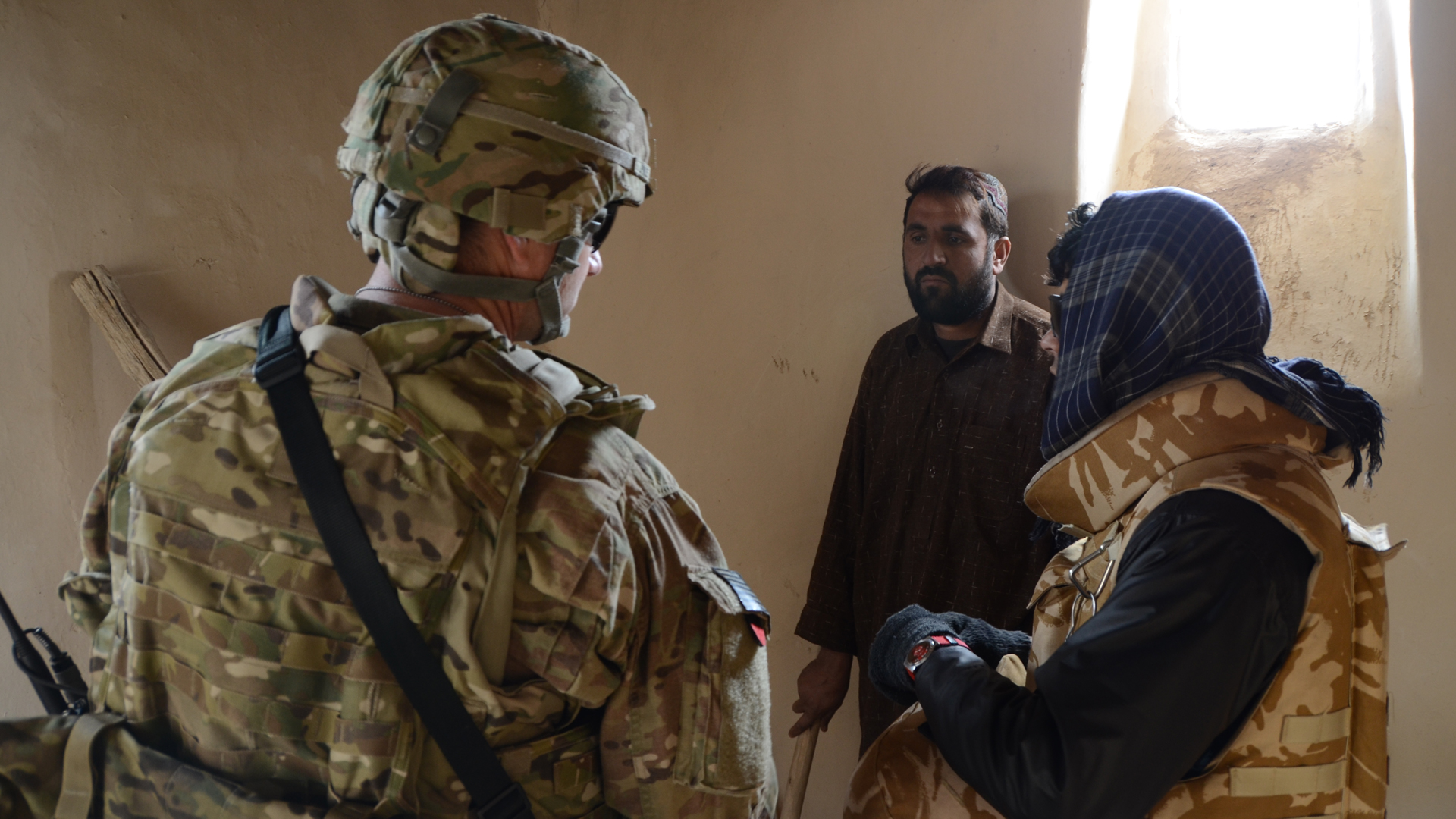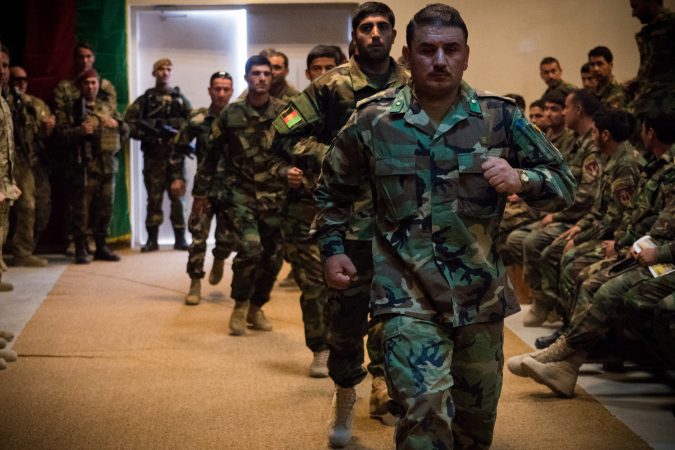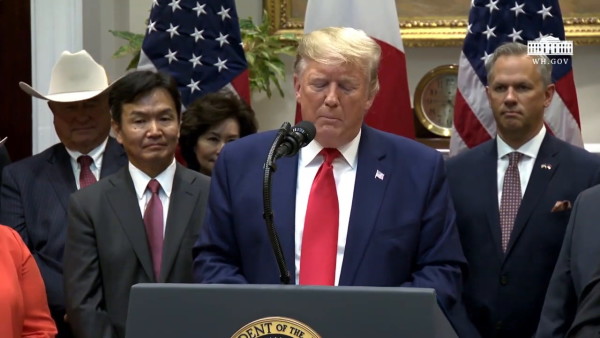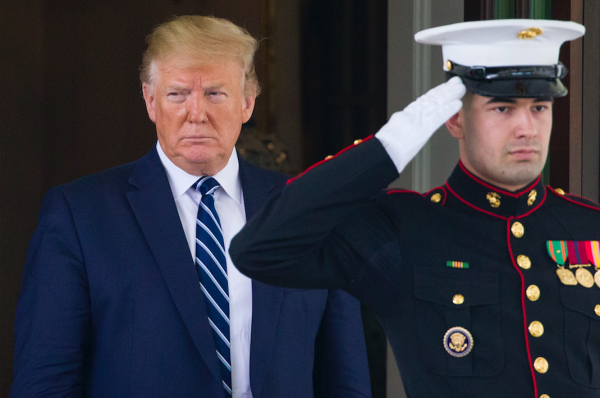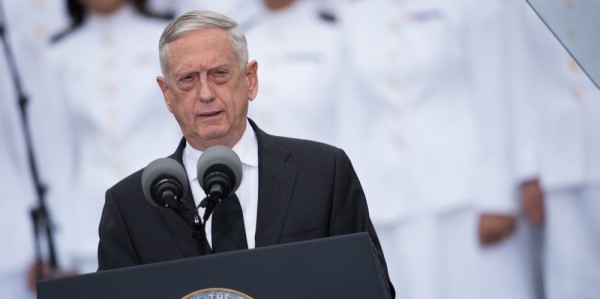As the U.S. withdrawal from Afghanistan nears its end, the Biden administration is still working to figure out how exactly it’s going to evacuate Afghans who have helped the U.S. in the past, and more specifically, where they will be evacuated to.
A senior administration official spoke on Thursday about the administration’s plans to a group of advocacy organizations that focus on Afghanistan and Special Immigrant Visa policy. Task & Purpose obtained a recording of the call, which occurred after President Joe Biden’s public remarks from the White House on Afghanistan.
The Special Immigrant Visa program helps move Afghan citizens who have worked for the U.S. military to the U.S. The administration has committed to evacuating those people, though it’s unclear exactly how many people that will include. The New York Times reported more than 18,000 Afghans worked in some capacity for the U.S. during the war and have been “trapped in bureaucratic limbo” waiting for their visas to be approved. Those 18,000 people have roughly 53,000 family members, the Times reported, and a senior administration official told the Times those family members would also be moved out of Afghanistan.
The official said on Thursday’s call that the administration has not set a cap on the number of people that it will try to evacuate.
“We are going to begin moving the most vulnerable people out as soon as they’re ready to be moved … We have not set a cap, we’ve also not set a floor, we’re going to start moving people out in the thousands as a start,” the official said.
But, the senior official made clear that the administration is not planning to bring anyone who has not had their background check completed directly to the U.S.
“Yes, these are people who we trust on some level, there are people who worked on our facilities in some cases, people who occupied positions of trust and responsibility in our mission in Afghanistan,” the official said. “But … there’s going to be some percentage of people for whom derogatory information will be turned up during the course of these background checks. The question then is, what do you do?”
Some people could be brought to the U.S. if they are still working to complete their visa paperwork, but have been cleared through the background check process.
Time is of the essence in moving Afghans out of the country; While Biden’s original deadline for the withdrawal of U.S. forces was the 20th anniversary of the Sept. 11 terror attacks, which marked the beginning of the Global War on Terror, he said from the White House on Thursday that the withdrawal would likely be completed by Aug. 31.
As the U.S. withdraws and the Taliban continues to gain more control in the country, the evacuation could be a matter of life and death for the Afghan interpreters left behind . One interpreter who worked with U.S. Special Operations Forces told the Washington Post that he “gave everything [he] had to the Americans,” and once they’re gone, “I will be killed.”
“They keep track of us, and they don’t shoot us like they do Afghan soldiers,” the interpreter said. “If they catch me, they will behead me.”
The senior official said during the call on Thursday that the administration is looking at three categories of locations that vulnerable Afghans could be evacuated to: U.S. territories, U.S. military installations overseas, and other countries who would agree to house, feed, and care for those who have been evacuated and are awaiting approval on their Special Immigrant Visa to move to the U.S.
Pentagon spokesman John Kirby reiterated much of the same, saying on Thursday that the Defense Department was working to identify “military installations that could be of use” to temporarily house those who are evacuated. He also said the State Department would be leading the process of notifying people being evacuated and directing them on next steps.
“Certainly our State Department colleagues know who they are and they do have procedures and protocols in place to communicate with them,” he said.
As for how they will be evacuated, Kirby said the State Department was leading the effort and “typically use … commercial aircraft that’s chartered by the government to fly people out.”
“Obviously we have transportation capabilities that, if needed, we’d be able to lend to the effort,” he said.
Alexander McCoy, a Marine Corps veteran and political director of progressive veteran’s organization Common Defense, said it’s “good to see the Joe Biden administration taking seriously our commitments to Afghan allies.”
“It’s clear that a lot still needs to be set in motion, and the need to share information needs to be balanced against the operational security concerns needed to keep these asylum-seekers safe,” McCoy said. “I hope to see more clarity in the coming weeks so that veterans like us can give accurate guidance to the Afghans we know from our service.”
Rep. Seth Moulton (D-Mass.), also a Marine Corps veteran, told Task & Purpose in June that the evacuation “should have started months ago,” and “needs to happen now.”
“One thing I’ve been very clear about is: We need to see this mission through to completion,” Moulton said. “What I don’t want to have happen is getting to a point a couple months from now where we don’t have troops on the ground anymore, we don’t have as good control of the airspace, and suddenly the administration says it’s no longer safe to continue this evacuation. That is not acceptable. This evacuation needs to continue until mission complet[ion].”

